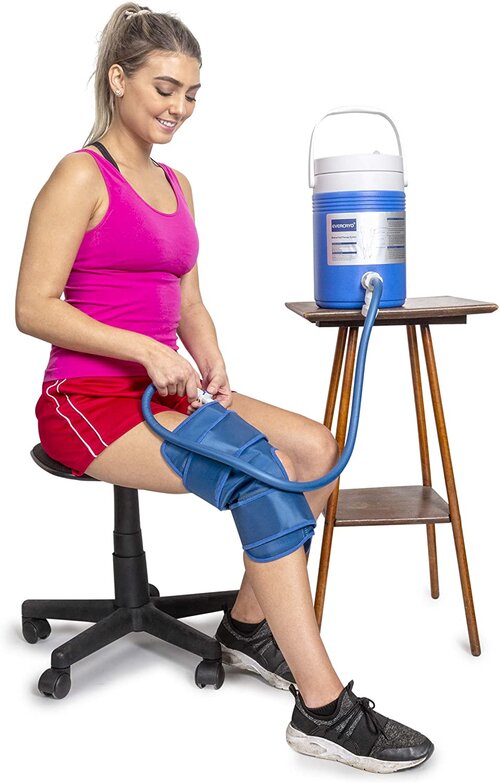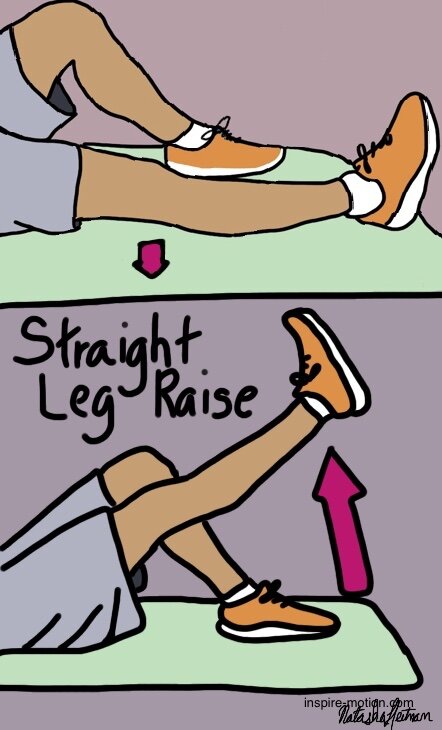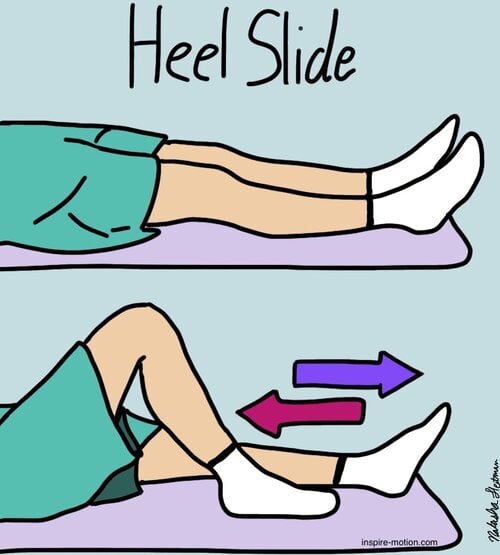Preparation for Total Knee or Hip Replacement
Do you have an upcoming knee or hip replacement scheduled? Are you someone who likes to be prepared and do whatever you can for the best outcomes for your health? We have compiled some recommendations that you can do the help you prepare for your upcoming Total Knee Replacement.

Prepare your home
Stairs
How many steps do you have to get into your home? Is there a rail? Is there a bathroom on the main floor or will you need to go to the second floor? Do those stairs have a hand rail? These are things that you will want to keep in mind about getting around your home after your Total Knee Replacement surgery.
Sleep
You’ll also need to elevate your leg regularly after surgery; what kind of set up do you have to taking breaks throughout the day? There are some great pillows we’ll share with you that people love even if they haven’t had surgery.
Clear Walk Ways
Look around your home and clear any trip hazards such as throw rugs, or items that may be taking up space on the floor. You’ll be using a walker to get around your home initially so you’ll want to have clear pathways to all the areas of the home you’ll need access to. These areas will most likely be your bathroom, place you’re sleeping/resting, and the kitchen. Take some time to think about how you’ll move about your home after the surgery and how to make your life simpler. Maybe you’ll need an extra walker for the second floor so you don’t have to carry the other one up with you. Consider contacting your local Lion’s Club that sometimes lends out extra equipment just for that purpose.
Pets
If you have pets, be sure to think about how you’ll minimize them from being under foot when you return home. Think about how you’ll be feeding or tending to their bathroom needs if you live alone.
Meals/Transportation
Meal planning and transportation will be something you’ll want to think ahead about if you live alone. You should contact your insurance company about coverage for a home health aid that can help with grocery runs, meals, and transportation to doctor’s visits. Think ahead about talking to your family and friends about what kind of things you’ll need help with. Talking to family that lives with you about how much help you’ll need from them is something to establish ahead of time. Utilizing grocery delivery services may also be helpful to look into prior to your surgery.
You won’t be able to drive yourself if you are taking any narcotics, so planning ahead for help with transportation will be important. Budgeting ahead for the use of Uber, Lyft, or Taxi service is something to think about as well.
Bathroom Needs
Prior to your surgery you will need to prepare for easy access to your bathroom for toilet use and eventually a safe shower set-up. Consider where the bathroom is located in your home, first floor, or second floor. Make sure your shower or bathtub is easy to get in and out of; you may need to consider a shower chair. Do you think you’ll need handrails in your bathroom? Some people will plan ahead and hire a handyman to install any extra safety measure that you might feel you need.
Equipments

Ice Pack
Now some hospitals will provide you with an ice pack, but you may have to purchase one yourself. You’ll need to discuss this with your Doctor or their assistant. Here is what you may need to purchase ahead of time. Discuss with your doctor how long to wear this ice pack. It is not recommended to wear continuously.
TIP: Place frozen water bottles instead of ice, and fill water around the frozen water bottles. Should prolong the cold output and you can just re-freeze the water bottles and not have to keep dumping out water.

Commode
You’ll also want a commode that can go over your toilet and adjusted for a higher level to make getting up and down from the toilet easier. This is also useful if you need to stay on a lower level of your home that may not have a bathroom. Again you’ll want to determine if your insurance will provide you with a commode after surgery or if you’ll need to obtain one yourself. Some people can rent them or you can purchase one in the provided link.

Shower Chair
Assess your shower/bath situation to determine if you’ll need a shower chair or extra handrails to make getting in and out of your shower or tub easier for bathing.
TIP: Contact your local Council on Aging or Lion’s Club about borrowing medical equipment. We’ve had several clients who have been able to get a commode or extra walker to make getting around their home easier at no additional cost.

Leg Elevation
Elevating your knee after a knee replacement is going to be very important to help with reducing swelling.
*Exercises you can start doing now
You can start doing some of the exercises you’ll do after your surgery to help get your muscles strong prior to surgery. The following list is for strengthening and improving the range of motion of your knee.

Quad Set
- You can either lie on your back or sit with your legs out in front of you.
- Extend one leg straight out in front of you.
- Tighten your thigh to straighten the leg as though pushing the back of the knee down into the surface you are on.
- Hold for about 5 seconds, relax the muscle and repeat 10 reps.
- You can perform this exercise on the opposite leg as well and complete this exercise once a day or every other day.

Short Arc Quad Set
- You can either lie on your back or sit with your legs out in front of you.
- Place your knee over a bolster or some rolled up pillows to create slight bend in the knee.
- Keeping the knee on the bolster/pillows, tighten the thigh muscle to straighten the leg.
- Hold for about 5 seconds and then very slowly lower your leg without it dropping back to start position.
- Repeat 10 repetitions.
- You can perform this exercise on the opposite leg as well and complete this exercise once a day or every other day.

Straight Leg Raise
- You can either lie on your back or sit with your legs out in front of you.
- Extend one leg straight out in front of you with the opposite leg bent.
- Tighten your thigh to straighten the leg as though pushing the back of the knee down into the surface you are on.
- Maintain the leg straight as you lift the leg up to the height of the bent leg.
- Slowly lower leg back to start position.
- Be sure to keep the thigh muscles tight and maintain the leg as straight as possible for the entire up and then down motion.
- Repeat 10 repetitions.
- You can perform this exercise on the opposite leg as well and complete this exercise once a day or every other day.

Heel Slides
- You can either lie on your back or sit with your legs out in front of you.
- Be sure to be on a smooth surface like bed sheets or a hardwood floor and wear socks.
- Slowly tighten the back of thigh as you slide your heel toward your butt.
- Focus on the muscles on the back of your thigh to bend the knee to stretch it.
- Hold for about 5 seconds at the end of your available range.
- Slowly return slide heel back to start position.
- Repeat 10 repetitions.
- You can perform this exercise on the opposite leg as well and complete this exercise once a day or every other day.
*Disclaimer: Every person should consult their physician or healthcare professional before starting any exercise program or changing their diet. They acknowledge that they understand the risks of injury they may incur by performing these exercise routines.
Rehabilitation After your Surgery
Once you’re finished with your hospital stay you will either be heading home or depending on your needs you may go to a rehab facility. Most people generally discharge home with some home therapy. Your home therapy will focus on functional activity and safety in your home. Once you have discharged from the home health therapy you will then need to go to an outpatient clinic for further treatment.
You can do your research now on the outpatient clinic and therapist you’ll want to work with. You’ll be doing therapy for quite awhile so you’ll want to find someone that works well with you and can help address your personal needs.
-Disclaimer: The content in this article is not intended to be a substitute for professional medical advice, diagnosis, or treatment. Always seek the advice of your physician or other qualified health provider with any questions you may have regarding a medical condition.
-Disclosure: Some of the links contained in this article are affiliate links, meaning, at no additional cost to you, we may earn a small commission if you click through and make a purchase.

